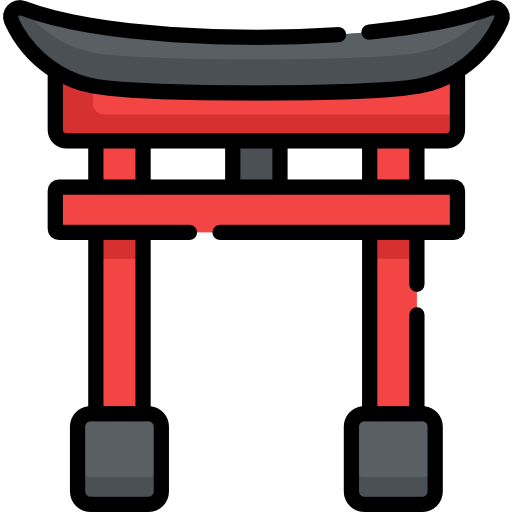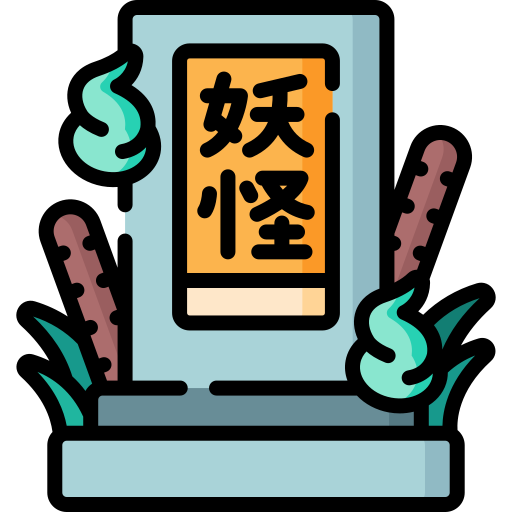Experience the Magic of Kyoto’s Autumn Light Up Events
When autumn arrives in Japan’s ancient capital, a spectacular seasonal tradition unfolds as the sun sets. The Kyoto light up events transform historic temples and gardens into enchanted wonderlands where centuries-old architecture meets nature’s vibrant fall colors under carefully designed illumination.
Unlike the winter illuminations that focus on holiday themes and decorative light displays, autumn light up events in Kyoto highlight the breathtaking combination of illuminated temple structures with the natural brilliance of red and gold maple leaves. This creates a uniquely Japanese aesthetic experience that draws visitors from around the world.
In this comprehensive guide, I’ll walk you through everything you need to know about Kyoto’s most magnificent autumn light up events for 2024, including exact dates, admission fees, accessing information, and insider tips to help you plan an unforgettable experience.
Want to explore Japan’s culture?
Discover Japan’s rich culture, traditions, and hidden gems with our expertly crafted guides. Get insider tips on travel, food, and history. All for free!
Why Autumn is the Prime Season for Kyoto Light Up Events
While Kyoto offers illumination events throughout the year, autumn undoubtedly provides the most spectacular backdrop for these magical nighttime experiences. The Kyoto night illumination events typically begin in mid-November and continue through early December, precisely timed to coincide with the peak of autumn foliage season.
According to local experts and historical weather patterns, the autumn foliage in Kyoto typically reaches its most vibrant colors during these periods:
- Northern Kyoto: Mid to late November
- Central Kyoto: Late November to early December
- Southern Kyoto: Late November to mid-December
To experience the perfect combination of illuminated temples and peak fall colors, plan your visit for the last two weeks of November. This timing aligns perfectly with most temples’ special nighttime viewing schedules and offers the most dramatic visual contrast between warm lights and rich autumn hues.
Top 10 Must-Visit Autumn Kyoto Light Up Locations (2024)
1. Kiyomizu-dera Temple: Higashiyama’s Illuminated Jewel
The Kiyomizu Dera illumination stands as perhaps the most iconic of all Kyoto’s autumn light up events. This UNESCO World Heritage Site’s wooden stage extending over the hillside becomes even more dramatic when illuminated against the night sky, surrounded by a sea of illuminated maple trees.
- 2024 Light Up Period: November 18 – November 30
- Hours: 17:30 – 21:00 (last entry 20:30)
- Admission: Adults ¥500, Elementary/Junior High Students ¥200
- Access: 11-minute walk from Kiyomizu-michi or Gojozaka bus stops
Following its major renovation completed in 2020, the main hall and iconic stage create a stunning focal point. The three-story pagoda illuminated against the autumn foliage offers one of Kyoto’s most photogenic night views.
2. Tofuku-ji Temple: Mesmerizing Bridge Views
Tofuku-ji’s Tsutenkyo Bridge spanning the Sengyokukan Valley offers what many consider Kyoto’s most spectacular autumn view. During the special nighttime viewing period, the bridge and surrounding maple-filled valley are dramatically illuminated, creating what locals poetically describe as “a sea of maple clouds.”
- 2024 Light Up Period: November 16 – December 1
- Hours: 17:30 – 19:30 (last entry 19:00)
- Admission: ¥2,800 (advance reservation required)
- Access: 10-minute walk from JR Tofuku-ji Station
From the illuminated bridge, visitors can gaze down upon a valley filled with maples glowing in shades of red and gold—a perspective that’s impossible to experience during daylight hours.

3. Eikando Temple (Zenrin-ji): The Maple Paradise
Known affectionately as “Eikando of maples,” this temple transforms into a red paradise during autumn. The nighttime illumination highlights approximately 3,000 maple trees throughout the temple grounds, creating magical reflections in Hojo Pond.
- 2024 Light Up Period: November 11 – December 1
- Hours: 17:30 – 21:00 (last entry 20:30)
- Admission: ¥700 for junior high school students and older
- Access: 3-minute walk from Nanzenji Eikando-michi bus stop
The illuminated Amida Hall housing the famous “Looking-Back Amida” statue creates a spiritual atmosphere that perfectly complements the natural beauty of the maple trees. When the leaves reflect in the temple’s ponds, the visual effect is nothing short of magical.
4. Kodai-ji Temple: Innovative Illumination Techniques
Kodai-ji offers a unique blend of traditional temple architecture with cutting-edge projection mapping technology. For 2024, the temple continues its special project commemorating Nene’s legacy (the wife of Toyotomi Hideyoshi who founded the temple).
- 2024 Light Up Period: October 25 – December 15
- Hours: 17:00 – 22:00 (last entry 21:30)
- Admission: Adults ¥600, Junior/Senior High Students ¥250
- Access: 15-minute walk from Keihan Gion-Shijo Station or 7 minutes from Higashiyama Yasui bus stop
The “Hashinniwa” garden in front of the Hojo features spectacular projection mapping that transforms the space into a representation of the heavens. However, the most breathtaking sight remains Garyu Pond, which acts as a perfect mirror for the illuminated maple trees surrounding it.
5. Kitano Tenmangu Shrine: Maple Garden Illumination
The head shrine of Tenmangu shrines throughout Japan features approximately 350 maple trees that create a stunning canopy of color. The illumination of the Kamiya River running through the maple garden creates a doubling effect as the colored leaves reflect in the water.
- 2024 Light Up Period: November 9 – December 8
- Hours: Sunset – 20:00 (last entry 19:40)
- Admission: Adults ¥1,200, Children ¥600 (includes tea ceremony sweets)
- Access: 5-minute walk from Kitano Hakubaicho Station on the Randen Line
What makes this Autumn illumination Kyoto experience special is the inclusion of traditional tea service with your visit, offering a multisensory cultural immersion.
6. Ninna-ji Temple: Sea of Clouds Effect
Ninna-ji’s illumination event creates what they call a “sea of clouds in autumn leaves.” The temple uses artificial mist combined with strategic lighting to create an otherworldly atmosphere around its five-story pagoda and autumn foliage.
- 2024 Light Up Period: October 25 – December 8 (Fridays, Saturdays, Sundays, Mondays, and holidays only)
- Hours: 18:00 – 21:00
- Admission: ¥2,800
- Access: 3-minute walk from Omuro Ninnaji Station on the Randen Line
The environment is designed with photography in mind, with lighting positions carefully calculated to help visitors capture stunning images of the illuminated structures and foliage.
7. Daigo-ji Temple: Ancient Pagoda in Autumn Splendor
This UNESCO World Heritage site offers a limited-time autumn illumination that highlights its five-story pagoda built in the Heian period against a backdrop of vibrant maple trees and azaleas.
- 2024 Light Up Period: November 22 – December 1
- Hours: 18:00 – 20:50 (last entry 20:10)
- Admission: ¥1,000 for junior high school students and older
- Access: Short walk from Daigoji-mae bus stop or 10-minute walk from Daigo Subway Station
The vermilion-lacquered Benten-do Hall illuminated against the night sky creates a particularly photogenic scene that exemplifies traditional Japanese aesthetics.
Love Japan? Stay in the Loop!
Get the best of Japan straight to your inbox: language, culture & travel insights!
8. Kibune Shrine: Maple Lantern Path
For a more intimate Kyoto light up experience away from the central city crowds, head to Kibune Shrine in northern Kyoto. The journey itself becomes part of the magic—take the Eizan Railway to view the spectacular “Maple Tunnel” between Ichihara and Ninose stations.
- 2024 Light Up Period: November 1 – November 24
- Hours: Dusk – 20:30
- Admission: Free
- Access: 5-minute walk from Kibune bus stop
The lantern-lit path through the Kibune Ryokan district (known as the “Road of Love”) creates a romantic atmosphere perfect for couples, while the illuminated shrine grounds offer a serene, spiritual experience surrounded by nature.
9. Chion-in Temple: Massive Scale Illumination
As the head temple of the Jodo sect of Buddhism, Chion-in offers one of Kyoto’s most expansive illumination experiences. The vast grounds feature multiple illuminated areas, including the Yuzen-en Garden, the massive Sanmon Gate (one of Japan’s largest wooden gates), and the scenic Onna-zaka slope.
- 2024 Light Up Period: November 14 – December 1
- Hours: 17:30 – 21:30 (last entry 21:00)
- Admission: Adults ¥800, Elementary and Junior High Students ¥400
- Access: 10-minute walk from Chionin-mae bus stop or 13-minute walk from Higashiyama Subway Station
The scale of this temple complex allows visitors to experience various illumination styles and autumn foliage viewing points within a single location.
10. Byodo-in Temple: Phoenix Hall Reflection
Located in Uji (just outside central Kyoto), Byodo-in’s special nighttime viewing “Ruikosho Terujin – Nishiki Autumn Light” illuminates the famous Phoenix Hall built on an island in Ajiike Pond, creating spectacular reflections on the water’s surface.
- 2024 Light Up Period: November 16 – December 1 (Saturdays and Sundays only)
- Hours: 18:00 – 20:30 (last entry 20:00)
- Admission: Adults ¥1,500, Junior/High School Students ¥1,000
- Access: 10-minute walk from JR/Keihan Uji Station
- Note: Pre-registration required
This National Treasure building, featured on the 10-yen coin, takes on an entirely different character when illuminated at night, making this worth the short trip from central Kyoto.

Essential Tips for Enjoying Kyoto Light Up Events
1. Plan Your Itinerary Geographically
Given that most Kyoto night illumination events run from around 17:30 to 21:00, you can realistically visit two venues in one evening if you plan carefully. Consider geographical proximity when scheduling—for example:
- Eastern Kyoto Route: Kiyomizu-dera → Kodai-ji (walkable)
- Northern Kyoto Route: Kitano Tenmangu → Ninna-ji (short train ride)
- Central Kyoto Route: Chion-in → Eikando (walkable)
2. Book Accommodations Far in Advance
Autumn is Kyoto’s busiest tourist season, with hotels often reaching full capacity, especially on weekends. I recommend booking accommodations at least 3-4 months in advance if you’re planning to visit during prime illumination season.
3. Dress Appropriately for Autumn Evenings
November evenings in Kyoto can be quite chilly, with temperatures often dropping to 5-10°C (41-50°F). Dress warmly in layers and consider bringing portable hand warmers (kairo) which can be purchased at any convenience store in Japan.
4. Invest in a Tripod for Photography
If you’re serious about photography, a small portable tripod is essential for capturing the illuminated temples and autumn foliage. Most venues allow tripods, but be mindful of other visitors and avoid blocking pathways.
5. Learn Essential Japanese Temple Phrases
While English information is increasingly available at major tourist sites, knowing a few basic Japanese phrases can enhance your experience. Before your trip, check out our Hiragana & Katakana Cheat Sheet and 100+ Essential Japanese Phrases guide to prepare.
6. Consider Using Taxi Services
While Kyoto’s public transportation is excellent, buses and trains can become extremely crowded during peak autumn season. For evening illumination hopping, consider using taxis to maximize your time. Ask your hotel concierge to write down your destinations in Japanese to show to drivers.
When to Visit: Avoiding Crowds at Kyoto Light Up Events
The autumn illumination season in Kyoto attracts massive crowds, particularly on weekends and during the peak foliage period. To enjoy a more peaceful experience:
- Visit on weekdays: Tuesday through Thursday typically sees smaller crowds
- Arrive at opening time: Most visitors tend to arrive around 18:30-19:00
- Consider early November: While foliage might not be at its peak, illuminations are still beautiful and significantly less crowded
- Try early December: The tail end of the season offers similar visual appeal with fewer visitors
Beyond Temple Light Ups: Enhancing Your Kyoto Autumn Experience
While temple illuminations are the highlight of Kyoto’s autumn season, consider these complementary experiences to round out your visit:
Traditional Kaiseki Dining
After enjoying a temple light up, experience a seasonal kaiseki meal that incorporates autumn ingredients. Many restaurants offer special evening courses designed for visitors attending illumination events.
Arashiyama Bamboo Grove
While not officially part of the temple illumination events, the famous bamboo grove in Arashiyama takes on a mystical quality in the early evening light. Visit around sunset before heading to nearby illuminated temples.
Japanese Tea Experience
Warm up between temple visits with a traditional Japanese tea experience. Several tea houses near major illumination venues offer evening hours during the autumn season.
For more information about Japanese culinary experiences to complement your temple visits, check out our guide to Best Japanese Street Food.

Planning Your Transportation: Getting Around Kyoto for Light Up Events
Navigating between illumination venues efficiently is crucial to maximizing your experience. For comprehensive transportation guidance, including using IC cards in the Kansai region, see our article on Using Suica in Osaka, which covers transportation options throughout the Kyoto-Osaka area.
Frequently Asked Questions About Kyoto Light Up Events
When is the best time to see Kyoto light up events?
The best time to experience Kyoto light up events is from mid-November to early December when autumn foliage reaches its peak and most temples host special illumination events.
Do I need to make reservations for Kyoto illuminations?
While most temple illuminations operate on a first-come, first-served basis, some venues like Byodo-in and Tofuku-ji strongly recommend or require advance reservations, especially during weekends and holidays.
How much do Kyoto light up events cost?
Admission fees for Kyoto autumn light up events typically range from ¥500 to ¥3,000, with most temple illuminations costing around ¥600-1,000 per person.
Can I visit multiple illuminations in one night?
Yes, it’s possible to visit 2-3 illuminations in one evening if you plan efficiently and choose venues that are geographically close to each other.
Are Kyoto illuminations suitable for children?
Most illumination events are family-friendly, though be aware that some temple grounds have uneven pathways and stairs that may be challenging for very young children, especially in the dark.
Year-Round Illumination Experiences in Kyoto
While this guide focuses on autumn temple illuminations, Kyoto’s magic doesn’t end when the maple leaves fall. If you’re planning a winter trip to Kyoto, be sure to check out our comprehensive guide to Kyoto Illumination 2024-2025: A Magical Winter Light Experience, which covers the city’s spectacular winter illumination events, including Kyoto Station’s grand staircase display, high-tech projection mapping shows, and festive holiday installations that continue through March.
Conclusion: Making the Most of Your Kyoto Light Up Experience
The autumn Kyoto light up events offer a unique opportunity to experience Japan’s cultural heritage transformed by the magical combination of careful illumination and nature’s seasonal beauty. These nighttime experiences create memories that truly capture the essence of traditional Japan with a contemporary twist.
Whether you’re a photographer seeking the perfect composition, a cultural enthusiast eager to experience Japanese aesthetics, or simply a traveler looking for magical experiences, Kyoto’s autumn illuminations will exceed your expectations.
Want to enhance your Japan language skills before your trip? Check out our JLPT N5 Kanji Cheat Sheet to help you recognize common characters you’ll encounter during your Kyoto adventures, or try our guide on Counting to 100 in Japanese to help you navigate ticket prices and schedules.
Have you experienced a Kyoto light up event? Share your favorite memories or questions in the comments below!
Join Fellow Japan Enthousiasts!
Ask questions, get study tips, and take part in weekly challenges. Join a community of motivated learners exploring both the language and culture of Japan!




